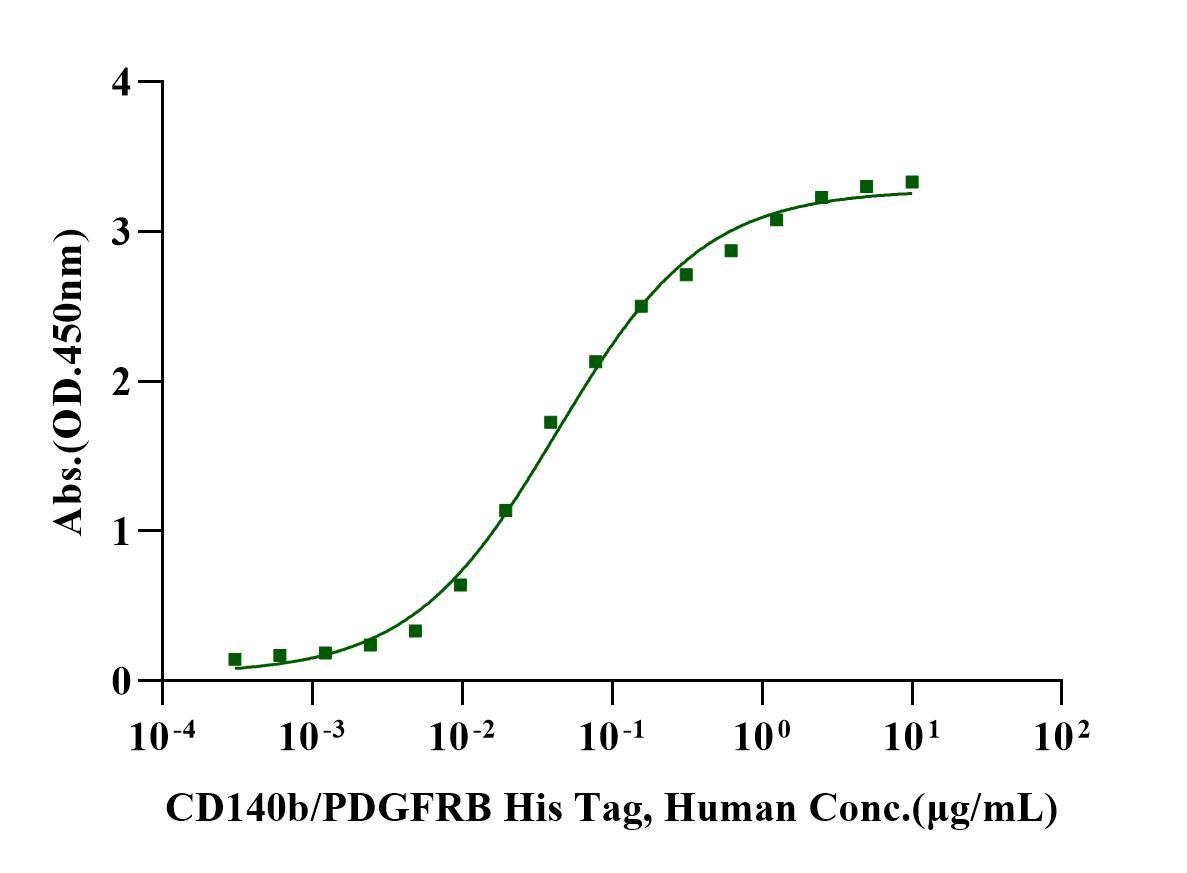Leu33-Val532, with C-terminal 10*His LVVTPPGPELVLNVSSTFVLTCSGSAPVVWERMSQEPPQEMAKAQDGTFSSVLTLTNLTGLDTGEYFCTHNDSRGLETDERKRLYIFVPDPTVGFLPNDAEELFIFLTEITEITIPCRVTDPQLVVTLHEKKGDVALPVPYDHQRGFSGIFEDRSYICKTTIGDREVDSDAYYVYRLQVSSINVSVNAVQTVVRQGENITLMCIVIGNEVVNFEWTYPRKESGRLVEPVTDFLLDMPYHIRSILHIPSAELEDSGTYTCNVTESVNDHQDEKAINITVVESGYVRLLGEVGTLQFAELHRSRTLQVVFEAYPPPTVLWFKDNRTLGDSSAGEIALSTRNVSETRYVSELTLVRVKVAEAGHYTMRAFHEDAEVQLSFQLQINVPVRVLELSESHPDSGEQTVRCRGRGMPQPNIIWSACRDLKRCPRELPPTLLGNSSEEESQLETNVTYWEEEQEFEVVSTLRLQHVDRPLSVRCTLRNAVGQDTQEVIVVPHSLPFKVGGGSGGGSHHHHHHHHHH
1. RAMESH PERIASAMY, SALLY L. ELSHAER, RAJASHEKHAR GANGARAJU. CD140b (PDGFRp) Signaling in Adipose-Derived Stem Cells Mediates Angiogenic Behavior of Retinal Endothelial Cells.[J]. Regenerative engineering and translational medicine,2019,5(1):1-9.
Human platelet-derived growth factor receptor, beta polypeptide (PDGFRB) is receptor that binds specifically to PDGFB. It is characterized by the presence of five immunoglobulin- like domains in their extracellular region and a split kinase domain in their intracellular region. The extracellular domain of human PDGF R beta contains 4 disulfide bonds and shares a 79% sequence identity with mouse and rat PDGF R beta. It is a cell surface tyrosine kinase receptor for members of the platelet-derived growth factor (PDGF) family. Recombinant soluble PDGFRB binds PDGF with high affinity and is potent PDGF antagonist.Many cell types, including fibroblasts and smooth muscle cells, express both the alpha and beta receptors.

1μg (R: reducing conditions, N: non-reducing conditions).

Immobilized PDGF-BB, Human (Cat. No. UA040014) at 0.5μg/mL (100μL/well) can bind CD140b/PDGFRB His Tag, Human (Cat. No. UA010514) with EC50 of 35.14-52.62 ng/mL.